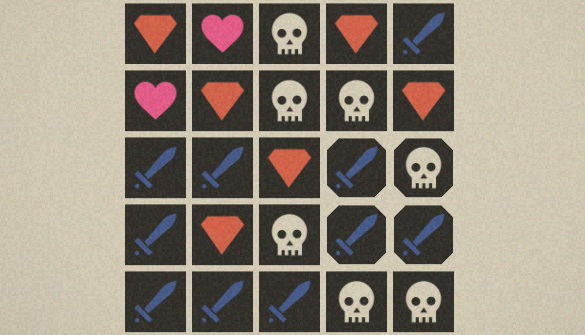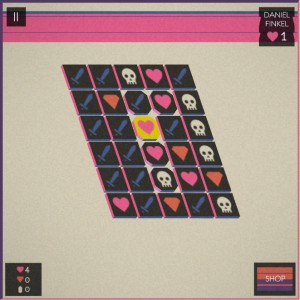Indie Rock: Faif
- Updated: 15th Oct, 2014

Put on your finest sparkly rocks and stuff a week’s pay into your bolero, we’re taking a jaunt down the old boardwalk for a high-class visit to the casino. What do you mean casinos are a utterly depressing display of predatory capitalism leaning on desperation from unfortunate members of a society who’ve found no aid for their addictive personalities? That casinos make you feel profoundly unsettled thanks to the limited natural lighting, lack of clocks and an abundance of security staff?
Should we just stay in and play indie games instead? And hold each other, like we used to?
Chop out all the ball-spinning and think about roulette’s core mathematics. Put your money on a number on the board and you’ve got a 1 in 37 chance of winning. Roulette is obvious risk and considerable unlikelihood set aside in your brain in order to try and get some mad dollar bills. You can decide how much risk you’re going to take by betting on larger portions of the board, but the payout is never better than picking that little number and crossing your fingers.
Faif’s best compared to roulette, even though it looks more like a sparsely designed Match-Three game. You’ve lifepoints and an opponent with some as well. There’s a board filled with symbols. You pick five adjacent symbols as your turn, then the game randomly selects one as your action. If it selects a sword, you do damage to the other player, but only as much damage as the amount of skulls you’ve also highlighted in your pick. If the game lands on a skull, you take 1 damage yourself. This means that picking two swords and three skulls gives you a 40% chance to do 3 damage, but a 60% chance to do 1 damage to yourself.
 When I first started playing I thought that the skulls were kinda chaff filling up the board and making it more difficult to select swords without accidentally leaving yourself open to damage, and that’s a fine idea for a game too, but it’s nowhere near as good as making you responsible for your own hubris. You’re the one who decided to pick four skulls and one sword for an all-out attack and now you’re the one who’s obviously dead on the next player’s turn when they decide to pick a more reasonable four swords and one skull.
When I first started playing I thought that the skulls were kinda chaff filling up the board and making it more difficult to select swords without accidentally leaving yourself open to damage, and that’s a fine idea for a game too, but it’s nowhere near as good as making you responsible for your own hubris. You’re the one who decided to pick four skulls and one sword for an all-out attack and now you’re the one who’s obviously dead on the next player’s turn when they decide to pick a more reasonable four swords and one skull.
The clutter, instead, is the jewels, which can be used to buy items from an in-game shop and interestingly, you pick up as many jewels as you’ve selected when the game randomly picks one of them as your action. Spend your entire turn picking five jewels and you’ll get them all. Pick just one and if that’s what luck draws then that’s the only jewel you’ll get. But picking them up means you’ve neither dealt damage or healed up by selecting a heart instead. Plus you’ve probably opened up the board better for the other player’s turn.
More than these limited risk/reward choices informed by your options at the time, I’m struck by Faif’s minimalist design. The icons are all just a single block colour and negative space. Look at how cute those skulls are! It doesn’t change the colour when you select anything, it just cuts the corners off like it’s feeding you a sandwich made of high-contrast textures.
Faif is aesthetics and risk/reward design made all itty-bitty and smoothy-polished; it’s bold striking colours over garish patterns and simple decision-making over unnecessary complexity. It’s free on the computer and some money on the telephone if you’ve got a telephone.
Faif is available in a browser, on Google Play or iOS 5+.

Follow Us!